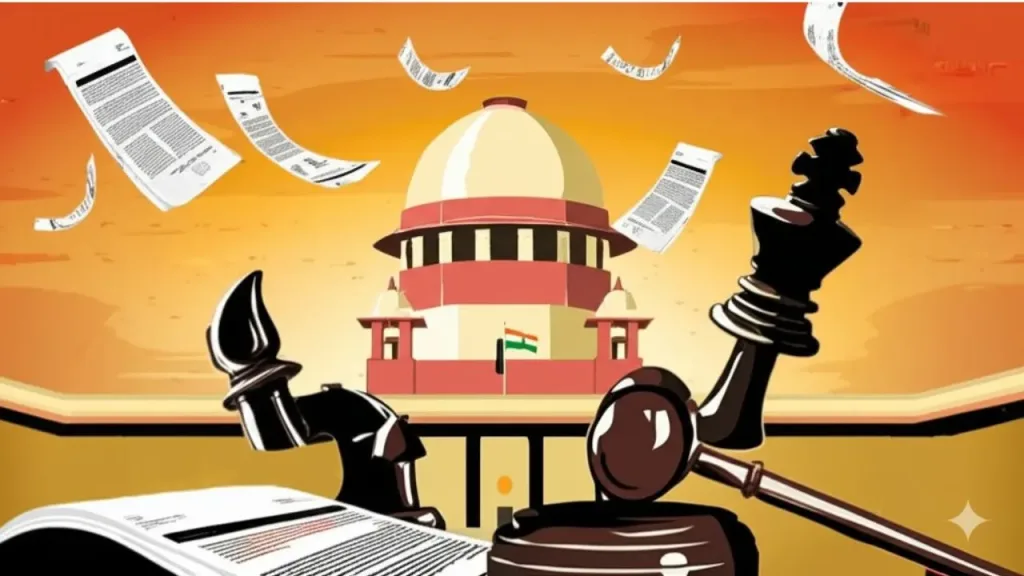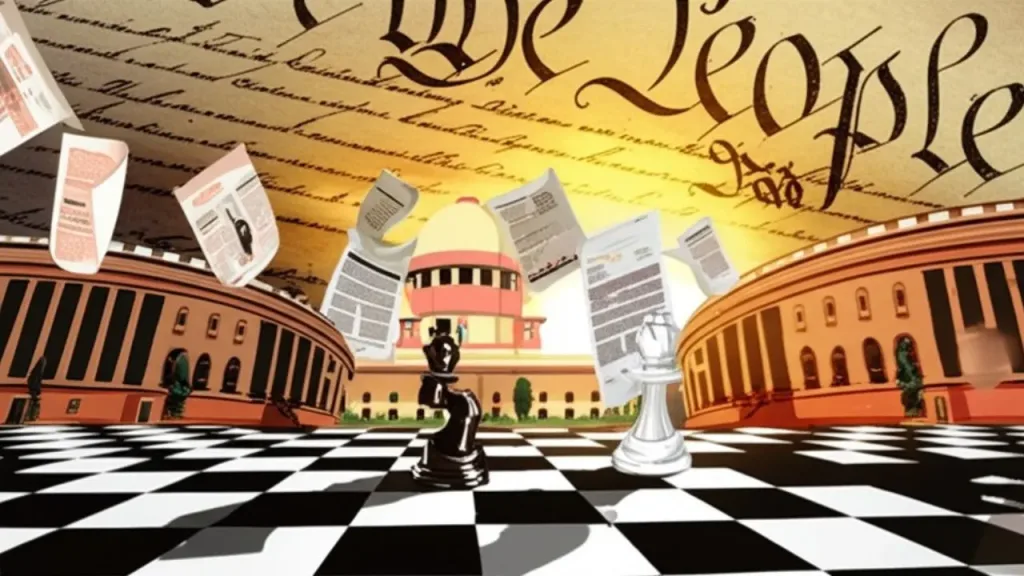India’s Judiciary vs Executive: A Constitutional Crossroads
By [Your Name] | April 2025 | New Delhi
Overview
India’s democratic framework is once again at a pivotal juncture. With mounting tensions between the judiciary and the executive, questions surrounding constitutional roles, institutional integrity, and the doctrine of separation of powers are taking center stage. Are we witnessing judicial overreach—or a much-needed intervention?
The Cracks in the Constitutional Triad
Governance Under Strain: Who Holds the Reins?
India’s Constitution was designed to distribute power among three co-equal branches—executive, legislature, and judiciary. The checks and balances built into the system are meant to protect democracy from centralization. Yet, recent legal and political developments reveal mounting friction, especially between the judiciary and the executive, threatening that delicate balance.
Tamil Nadu’s Legal Face-Off: When Governance Stalls
The Governor’s Inaction and the Supreme Court’s Unprecedented Step
The crisis gained traction when the Tamil Nadu government took the extraordinary step of petitioning the Supreme Court over the Governor’s delay in granting assent to bills passed by the Assembly. The Supreme Court responded by invoking Article 142, directing the Governor and the President to act within a specific timeline.
This rare use of Article 142—empowering the Court to enforce “complete justice”—raised eyebrows. While it was praised by some as a necessary check on executive lethargy, others, particularly within the political establishment, called it an overextension of judicial power.

Vice President Dhankhar’s Warning: An ‘Atom Bomb’ or a Safeguard?
Constitutional Anxiety from the Upper Echelons
Vice President Jagdeep Dhankhar sharply criticized the Supreme Court’s directive, describing Article 142 as a potential “atom bomb” with the capacity to disrupt the constitutional balance. “The framers of the Constitution never imagined such sweeping power in judicial hands,” he warned during a public address.
Such remarks underscore growing discomfort within the executive over the judiciary’s increasing assertiveness.
MP Nishikant Dubey vs the Courts: Controversy in Parliament
Political Rhetoric or Institutional Undermining?
BJP MP Nishikant Dubey took the debate further by openly accusing the judiciary of “forcing the executive and legislature into silence.” His remarks, made in Parliament, ignited backlash across party lines.
Critics argued that such comments threatened the dignity of the judiciary, while defenders cited Article 105, which grants MPs immunity for statements made in Parliament. Outside the chamber, however, these remarks may toe the line of contempt of court under the Contempt of Courts Act, 1971.
Judiciary in the Dock: Transparency vs Accountability
Vice President’s Allegation of Corruption Raises Eyebrows
Dhankhar didn’t limit his critique to constitutional interpretations. He made veiled references to allegations of unaccounted wealth discovered during raids on certain judges, questioning the moral high ground claimed by the judiciary.
“Those who live in glass houses should not throw stones,” he remarked—a stark reminder that no institution is above scrutiny.
Waqf Act Amendment: Parliament vs Bench
When a Law Passed Is a Law Blocked
The amended Waqf Act, passed after significant legislative debate and deliberation, was stayed by the Supreme Court before implementation. Lawmakers expressed frustration, accusing the judiciary of preemptively blocking reform efforts without full hearings.
Such flashpoints further cement the narrative that the legislature’s authority is being diluted by judicial interventions.
The Bigger Picture: A Crisis of Confidence or Course Correction?
Finding the Balance Before the Pendulum Swings Too Far
India’s current institutional tensions raise foundational questions:
- Should courts intervene when governance falters, even if it means stepping into executive space?
- Can the judiciary retain moral authority while allegations of internal opacity and impropriety remain unaddressed?
- Is the separation of powers being honored—or redefined?
Experts argue that while judicial activism may sometimes be necessary to uphold constitutional values, it must not become a substitute for democratic processes or undermine public trust in elected bodies.

The Way Forward: Institutional Humility and Democratic Maturity
A Call for Recalibration, Not Confrontation
India’s democracy doesn’t need turf wars—it needs mutual respect among institutions. As the nation navigates this constitutional tension, what’s required is not dominance, but dialogue. Power, after all, is not just a function of authority but of responsibility.
The Constitution isn’t a sword—it’s a compass. And right now, India must follow its true north.
